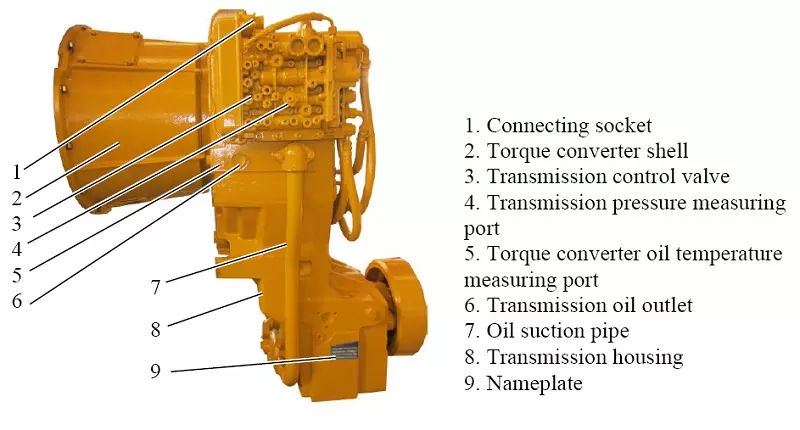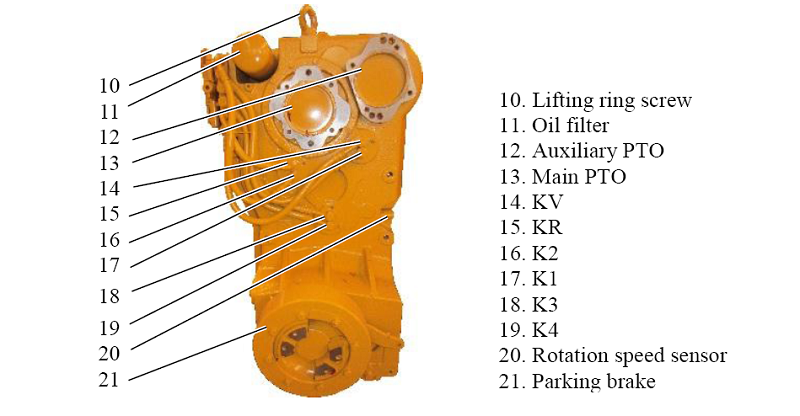The automobile and motorcycle parts industry has a more long history than the entire vehicle industry, but its slow development rate has almost made people overlook its existence. However, this easily overlooked industry has great potential. According to statistics, in 2003, the sales revenue of China's auto parts industry was 300 billion yuan, accounting for about 1/3 of the total sales of the automotive industry.
Zhejiang Province, a major province of auto parts manufacturing, exported 129 million U.S. dollars in auto parts in the first quarter of this year, an increase of approximately 88% year-on-year, accounting for one-sixth of the total value of China’s auto parts exports, and it has become China’s export industry. One of the main bases. Among them, private enterprises surpass half of the total export volume of auto parts, and for the first time, there are two companies that export over 10 million US dollars.
However, at the same time, we should see that so far, China's spare parts industry has not yet presented a clear development context like the entire vehicle production. Although the production of domestic parts and components is considerable, the overall scale is not large. In terms of development capabilities, China's current products that have entered the international auto parts supporting system are still mainly concentrated in the front suspension and rear axle sections of the car, and there is basically no electronic control technology that represents mainstream new technologies. Almost all automotive electronics products are from joint ventures and imported products, which has become a bottleneck restricting the upgrading of the automotive industry. At present, most parts and components companies in China do not have the capability to produce products with high added value and high technology content. Such as electronic products, fuel injection systems, active and passive safety systems, steering systems, sensors, brake systems, and the production of these components are controlled by foreign companies. The products that Chinese parts and components manufacturers can really independently research and develop are just sound and speakers.
Technology weakness becomes a bottleneck
Information from the Ministry of Commerce shows that in 2003 China’s auto parts import amount was far greater than the export amount, and the trade deficit reached nearly 3 billion US dollars. A person in charge of the China National Association of Machinery Industry Enterprise Management said that the parts and components purchased by foreign manufacturers in China are generally low in technical content, and the continuous expansion of the domestic vehicle market, especially the prevalence of CKD assembly, has resulted in a huge number of core components. Import demand. In 2003, the import amount of gearbox was as high as USD 860 million and the number of engines was 374,000.
In the face of numerous practical difficulties, component manufacturers do not expect a piece of paper policy to solve all problems. Tian Yushi, general manager of FAW-Foolyo Automotive Parts Co., Ltd. once claimed at the auto show that the relevant government departments have not only neglected the attention paid to the parts and components industry for a long time, but even required parts to make joint ventures for the joint venture of the entire vehicle. There are many problems in the development of domestic parts and components industry. At present, the space for survival of Chinese-funded parts and components companies is being severely squeezed by foreign-funded enterprises. According to the statistics of relevant data in 2003, the imported parts amounted to more than 6 billion U.S. dollars, equivalent to about 30% of the total domestic parts and components. At the same time, some domestic vehicle joint ventures are engaged in KD production. About 70% of the new models listed in the past two years are produced using KD.
Under this premise, it is difficult for Chinese-owned parts and components enterprises to squeeze into the supporting system of the entire vehicle joint venture. Although there are new cars listed, these domestic so-called new cars have already been listed in foreign countries and related supporting systems have already been established. Chinese-funded parts and components companies must start from scratch, and the follow-up foreign-funded supporting enterprises have long been accommodating and are simply not at the starting line.
For example, Wanxiang Group, a well-known Zhejiang company, mainly manufactures auto parts. However, Wanxiang has not qualified for Ford and General Motors, but it is supplying to Ford and GM's secondary and tertiary suppliers.
The arduousness that this brings is evident. In the first quarter of this year, the United States market accounted for nearly half of the total value of auto parts exports in the province. This means that once the United States declines in automobile sales due to economic slowdown and lack of confidence in the consumer market, it will have a serious impact on the export of auto parts in Zhejiang. At the same time, Zhejiang's parts and components exporters are generally dominated by domestic-funded enterprises, R&D capital investment is relatively insufficient, and most of the exported products are counterfeit and plagiarism. Therefore, in the first quarter, more than one-third of the export products were auto parts, and the proportion of core components was exported. small. For example, the export of a core component transmission accounted for only 0.2% of the total value of exports in the first quarter.
The introduction of foreign capital is imperative
At present, Zhejiang has emerged a large number of privately-owned vehicle companies mainly engaged in domestic sales, such as Geely cars, Zonda buses, and Wanfeng SUVs. General Motors, Ford, Volkswagen, Toyota, BMW and other world’s nine largest automotive multinational companies have also entered China. The world’s major auto parts companies also follow the OEM’s to invest in domestic factories or establish technical cooperation with domestic parts factories. . However, in the first quarter of this year, the proportion of auto parts exported through processing trade was less than 8%. Zhejiang still has considerable potential in attracting foreign investment in auto parts and components. According to industry figures, through joint ventures and cooperation with foreign auto parts companies, it is possible to increase the level of production technology for parts and components in Zhejiang Province and enhance the research and development capabilities of the products, thereby increasing the market competitiveness of the products.
How to improve the overall strength of domestic parts and components companies, Zeng Qinghong, deputy general manager of Guangzhou Honda Automobile Co., Ltd. believes that the large-scale entry of foreign parts companies is a must. Only these parts and components companies have come in to promote the improvement of China's overall component strength. China's motorcycles are now developing more independently, because the motorcycle parts industry is very developed. However, Zeng Qinghong also stated that China's vehicle tariffs will eventually drop to 25% after joining the WTO, while parts and components tariffs only need 10%, which is exactly the opposite of US tariffs. This may make parts and components companies prefer to export their products to the Chinese market rather than enter the Chinese market for joint venture or wholly-owned production, because the cost may be similar.
One analyst disagrees. He believes that the low tariff will not affect the enthusiasm of foreign parts companies. There are indications that foreign auto companies require their accessory parts manufacturers to enter Chinese production. For example, it was reported recently that Ford Motor Company had requested that a supplier in California in the United States be provided with a hub. As a result, this analyst believes that all parts and components companies will inevitably enter the Chinese market under the pressure of the OEM. A few years later, China will surely become one of the global parts supply bases for auto companies. Parts produced in China will not only supply the needs of domestic companies, but will also be exported to the international market. Due to the advantages of labor and human resources, the pricing of parts and components in the Chinese market may become the pricing of global procurement by auto companies.
Transmission spare parts for XCMG , LIUGONG, SDLG, XGMA, DEGONG, SHANTUI wheel loader, excavator spare parts with best price.
wheel loader spare parts ZF 4WG200 4WG180 transmission


Basic terminology for transmission:
(1) Driving gear and driven gear. The input shaft can be understood as connected to the clutch and rotates under the drive of the Engine. The gear fixed on the input shaft rotates accordingly. This gear is called the driving gear and the gear connected to the output shaft is forced to rotate. This gear is called a driven gear.
(2) Transmission ratio i. The ratio of the number of Teeth of the driven gear to the number of teeth of the driving gear is defined as the transmission ratio.
When the relationship between the number of teeth of the driven gear and the number of teeth of the driving gear changes, the transmission ratio i changes. Under the condition of constant engine speed, it will affect the output shaft speed change, that is, the wheel speed change. For a pair of gears that mesh with each other, the number of teeth will not change during use, so its transmission ratio is fixed. If a number of gears with unequal numbers of teeth are installed on the input shaft to mesh with gears with varying numbers of teeth on the output shaft, a set of stepped transmissions with different transmission ratios i can be obtained. The automobile transmission is based on this basic principle to realize the gear shift.
(3) Forward gear, a gear position that enables the car to travel forward. Reverse gear is a gear that can make the car go backwards. In neutral, all gears in the transmission are not in the working position. At this time, after the engine power is input to the input shaft, it is no longer transmitted to the output shaft.
(4) Direct files. The engine power is not transmitted by any gears in the transmission, but directly output through the transmission input shaft and the output shaft directly connected to it as a direct gear. The direct gear ratio is 1.
(5) Overdrive gear. That is, the speed of the output shaft is higher than the gear of the input shaft.
(6) Number of files. Refers to the number of gears that the stepped gear transmission has. Commonly used gear transmissions have four to five gears, and three-speed transmissions are rare. The more gears, the better the car's adaptability to driving conditions and the lower the fuel consumption. However, the more complex the transmission mechanism and the operating mechanism, the more difficult the operation and the higher the cost.
(7) Low-end and high-end. In the gears of the transmission, the gear with the smaller number is called low gear. The smaller the number, the greater the transmission ratio, the greater the traction, and the lower the vehicle speed. For example, the transmission ratio of first gear is the largest in the forward gear, the vehicle speed is the lowest, and the traction is the largest. A gear with a large number is called high-end. The larger the number, the smaller the transmission ratio and the lower the traction, but the higher the speed.
(8) Shift gears. The process of changing the transmission ratio of the transmission is called shifting. The gear shift of the adapter sleeve is integrated with the gear, and the gear ring on the tooth side meshes (or separates) with the adapter sleeve to achieve the transmission ratio change is called the adapter sleeve shift. Synchronizer shifts, use synchronizer to shift gears. Not only is there no impact and noise on the engaging teeth, but the shift time is also short.
(9) Skip gears. During the driving of the automobile, due to the wear and vibration of the coupling teeth, the coupling sleeve and the coupling ring gear are separated and the transmission is in a neutral state.
Transmission Box,Wheel Loader Transmission Assy,Transmission Gear Selector,Transmission Oil Radiator
Jinan Union Construction Machinery Co., Ltd. , https://www.tfloaderparts.com